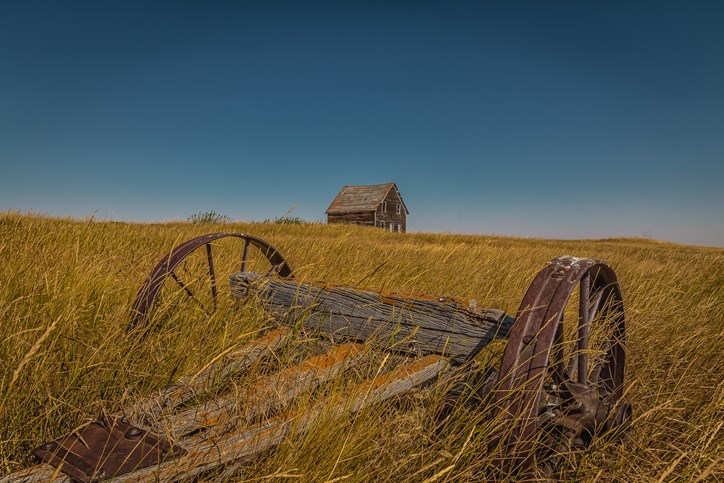Most western Canadian farmers don’t have Indigenous farmers as neighbours.
The world of the average farmer and the world of Indigenous people often seem like alternative universes that sometimes spark with friction at the contact points.
Why is that?
The most common understanding, one I’ve heard my whole life, and one that was commonplace all the way back to the 1870s and 1880s, is that Indigenous people just didn’t take to agriculture, preferring to cling to the ancient hunting and gathering ways of their culture.
It’s never been true, but that myth provided a handy justification for why the many efforts and hopes for transforming Indigenous society into becoming part of the Prairies farming fabric mostly failed.
Most Canadians accepted that Indigenous reality evolved on the reserves, in the forests and on Crown lands, with the people pursuing traditional activities, while on the grasslands the western European settlers transformed a vast unused region into one of the bread baskets of the world.
It has often been seen as a natural development of two fundamentally opposed societies.
It’s jarring, in the context of this sort of thinking, to read of the much different reality that existed on the plains before settlement had transformed the Prairies.
I’ve been re-reading this history this summer, as Canada undergoes a national reassessment of its history of settlement and how it treated Indigenous peoples as the country developed.
It’s a tragic tale of earnest and sincere efforts of the Indigenous nations of the plains to embrace agriculture, and of federal government negligence, incompetence, arrogance and, at times, criminality consistently undermining, crippling and destroying those efforts.
Although most Canadians still don’t know this history, it’s long been known and studied in Canadian historical circles. I first came across it in 1994, when I was graduate student in history at the University of Saskatchewan, and my thesis adviser told me to read Sarah Carter’s Lost Harvests: Prairie Indian Reserve Farmers and Government Policy. I read that book in 1994 and have never looked at Prairie development the same. (That’s the book I’m re-reading today.)
Carter (and a number of historians since) tells the appalling story of how Indigenous leaders made agricultural development central to a number of the treaties, something that didn’t much concern Ottawa’s negotiators, and how the government failed or only grudgingly fulfilled its obligations, leaving Indigenous farming efforts to wither and fail in the crucial years of the 1870s and 1880s, before waves of European settlement flooded the Prairies.
The government failed to provide seed and farming implements. The farming instructors it sent were mostly patronage appointments from the east connected to Prime Minister John A. Macdonald, and generally both incompetent and uninterested.
Indigenous bands were not allowed to pick their own land but were forced to pick reserve sites that federal officials approved, which contained little arable land and were distant from anywhere they could sell their grain.
The disappearance of the buffalo left the plains Indigenous bereft of food, clothing and much else, so as they tried to farm they were often on the verge of starvation and forced to forage for anything they could find to eat. Federal food aid was paltry and often withheld to punish Indigenous “idleness,” such as their need to hunt for food.
In the mid-1880s Indigenous leaders organized a campaign to improve the treaties so that Indigenous farming would have a chance to get established, but the Northwest rebellion of 1885 gave the federal government the excuse to crush the independence of First Nations, even though almost all remained loyal to their treaty promises. They were restricted to reserves and subject to government approval for almost anything they endeavoured to do beyond growing vegetable patches.
Eastern Canadians had conflicting views about what was occurring out West. Some accepted the government’s claims that it took a benevolent and supportive role with the Indigenous, but that the Indigenous had proven difficult to “civilize.”
Others thought the government had been cruel and barbaric in using starvation and cruelty as tools in bending the Indigenous to its will.
And others thought the Indigenous would inevitably fade away as a more vibrant European civilization supplanted their ancient ways.
What would have happened had the government sincerely and competently, with enough resources, supported Indigenous peoples’ repeatedly expressed and emphasized desire to become farmers? There were early success stories with Indigenous agriculture where conditions were right, as with the demonstration farm at Cypress Hills, but those were quickly abandoned by the government.
Farming, as every farmer knows, is an unforgiving business, and without proper instruction, seed, implements, arable land and access to markets, it’s hard to see how Indigenous people could have made the transition to the farm economy that so many wanted.
We’ll never know. History only happens once and we can’t see what would have happened in different circumstances. We have only what’s before us in the records and on the land.
It isn’t pleasant reading, but it addresses a prairie agricultural reality most of us never realized existed.

